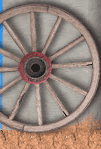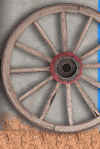We deal in items we believe others will enjoy and want to purchase.
We are not experts.
We welcome any comments, questions, or concerns.
WE ARE TARGETING A GLOBAL MARKET PLACE.
Thanks in advance for your patronage.
Please Be sure to add WDG to your favorites list!
NOW FOR YOUR VIEWING PLEASURE…
"HOW THE WEST WAS WON"
1963 UNITED ARTISTS RECORDS
MONAURAL UAL 3283
MUSIC FROM THE MOTION PICTURE
MGM CINERAMA
THE HOLLYWOOD SOUND STAGE ORCHESTRA
SIDE ONE
HOW THE WEST WAS WON 2:00
A HOME IN THE MEADOW 3:32
WHEN JOHNNY COMES MARCHING HOME 2:20
COME SHARE MY LIFE 3:47
CLEVE AN DTHE MULE 3:13
SIDE TWO
WAIT FO RTHE WAGON 3:38
NO GOODBYE 3:12
I'M BOUND FOR THE PROMISED LAND 2:30
BATTLE HYMN OF THE REPUBLIC, GLORY GLORY HALLELUJAH 2:23
ENDLESS PRAIRIE 3:40
COVER PHOTOGRAPH COURTESY OF JAMES STEWART
PRODUCTION BY ALFRED NEWMAN, KEN DARBY, AND JOHNNY MERCER
COVER IS VG+ / NEAR MINT
ALBUM IS NEAR MINT
SOME ORIGINAL CELLOPHANE
REMAINS ON COVER
RED INK STAMP "NR"
NOT RATED?
SO ALLED "ERROR COVER"
---------------------
FYI
How the West Was Won is a 1962 American Metrocolor epic-Western film. The picture was one of the last "old-fashioned" epic films made by Metro-Goldwyn-Mayer to enjoy great success. Set between 1839 and 1889, it follows four generations of a family (starting as the Prescotts) as they move ever westward, from western New York state to the Pacific Ocean. The picture was filmed in the curved-screen three-projector Cinerama process.
The fundamental idea behind the film was to provide an episodic retelling of the progress of westward migration and development of America. It was inspired by a much longer and more complex series of historical narratives that appeared as a photo essay series, by the same name, three years earlier in Life magazine, which is acknowledged in the film’s credits.
The all-star cast includes (in alphabetical order) Carroll Baker, Walter Brennan, Lee J. Cobb, Andy Devine, Henry Fonda, Carolyn Jones, Karl Malden, Harry Morgan, Gregory Peck, George Peppard, Robert Preston, Debbie Reynolds, James Stewart, Eli Wallach, John Wayne, and Richard Widmark. The film is narrated by Spencer Tracy.
The movie consists of five segments, three directed by Henry Hathaway ("The Rivers", "The Plains" and "The Outlaws"), and one each by John Ford ("The Civil War") and George Marshall ("The Railroad"), with transitional sequences by the uncredited Richard Thorpe. The screenplay was written by John Gay (uncredited) and James R. Webb. Popular western author Louis L'Amour wrote a novelization of the screenplay.
In 1997, How the West Was Won was selected for preservation in the United States National Film Registry by the Library of Congress as being "culturally, historically, or aesthetically significant". The score was listed at #25 on AFI's 100 Years of Film Scores.
Plot
The Rivers (1840)
The Plains (1850s)
The Civil War (1861–1865)
The Railroad (1868)
The Outlaws (1880s)
Cast
Carroll Baker as Eve Prescott Rawlings
Lee J. Cobb as Marshal Lou Ramsey
Henry Fonda as Jethro Stuart
Carolyn Jones as Julie Rawlings
Karl Malden as Zebulon Prescott
Harry Morgan as Gen. Ulysses S. Grant
Gregory Peck as Cleve Van Valen
George Peppard as Zeb Rawlings
Robert Preston as Roger Morgan
Debbie Reynolds as Lilith Prescott
James Stewart as Linus Rawlings
Eli Wallach as Charlie Gant
John Wayne as Gen. William Tecumseh Sherman
Richard Widmark as Mike King
Brigid Bazlen as Dora Hawkins
Walter Brennan as Col. Jeb Hawkins
David Brian as Lilith's attorney
Andy Devine as Corporal Peterson
Raymond Massey as President Abraham Lincoln
Agnes Moorehead as Rebecca Prescott
Thelma Ritter as Agatha Clegg
Mickey Shaughnessy as Deputy Stover
Russ Tamblyn as Confederate deserter
Spencer Tracy as Narrator
The film marked then sixty-six-year-old Raymond Massey's last appearance as Abraham Lincoln, a role that he had previously played on stage (Abe Lincoln in Illinois and the stage adaptation of John Brown's Body), on screen (Abe Lincoln in Illinois) and on television (The Day Lincoln Was Shot, and two more productions of Abe Lincoln in Illinois).
Lee Van Cleef (bushwhacking river pirate), John Larch, Ken Curtis, Jay C. Flippen, Clinton Sundberg, Willis Bouchey, Carleton Young, Karl Swenson, Rodolfo Acosta and Harry Dean Stanton play very brief, uncredited roles.
Music
The music for the film was composed and conducted by Alfred Newman. The soundtrack album was originally released by MGM Records. Dimitri Tiomkin, well known for scores to western films, was the first composer approached to compose the music for the film. However, Tiomkin became unavailable as a result of eye surgery, and Newman was hired as a replacement.
The score is widely considered to be one of Newman's best, and appears on the AFI's 100 Years of Film Scores list. It was nominated for the Academy Award for Best Original Score, losing to Tom Jones.
Restoration
Crest Digital was given the task of restoring the original Cinerama negative for How the West Was Won in 2000 and built their own authentic Cinerama screening room in order to complete the process. There have also been efforts, led by HP, to combine the three image portions and make the Cinerama image look more acceptable on a flat screen. This has finally been accomplished on the latest DVD and Blu-ray Disc release. The lines at which the three Cinerama panels joined were formerly glaringly visible (as seen in the stills reproduced on this page), but this has been largely corrected on the Warner Bros. DVD and Blu-ray Disc, although the joins can still be seen in places, especially against bright backgrounds. The restoration also corrects some of the geometric distortions inherent in the process; for instance, in the final shot, the Golden Gate Bridge appears to curve in perspective as the camera flies underneath it, whereas in the Cinerama version, it breaks into three straight sections at different angles.
The Blu-ray Disc also contains a "SmileBox" version, simulating the curved screen effect.
Even though the aspect ratio of Cinerama was 2.59:1, Warner's new BD and DVD releases of the film offer an aspect ratio of 2.89:1, incorporating image information on both sides that was never meant to be seen when projected. The BD-exclusive SmileBox alternative has the intentional cropping intact.
The restored Warner Bros. release has been shown on television since October 2008, on the Encore Westerns channel.

(THIS PICTURE FOR DISPLAY ONLY)
---------------------------
Thanks for choosing this sale. You may email for alternate payment arrangements. We combine shipping. Please pay promptly after the auction. The item will be shipped upon receipt of funds.WE ARE GOING GREEN, SO WE DO SOMETIMES USE CLEAN RECYCLED MATERIALS TO SHIP.
Please leave feedback when you have received the item and are satisfied. Please respond when you have received the item.
*****
5*'s
*****
If you were pleased with this transaction, please respond with all 5 stars! If you are not pleased, let us know via e-mail. Our goal is for 5-star service. We want you to be a satisfied, return customer.
Please express any concerns or questions. More pictures are available upon request. The winning bid will incur the cost of S/H INSURED FEDEX OR USPS. See rate calculator or email FOR ESTIMATE. International Bidders are Welcome but be mindful if your country is excluded from safe shipping.
Thanks for perusing THIS and ALL our auctions.
Please Check out our other items!
WE like the curious and odd.
BUY, BYE!!






